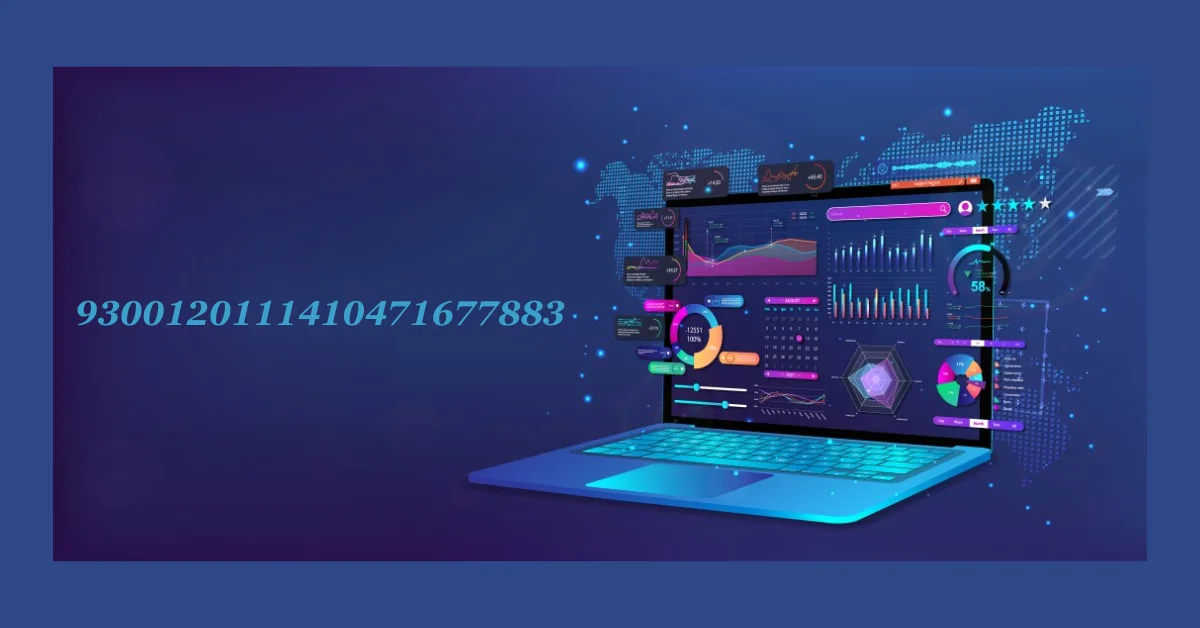9300120111410471677883: Uncovering the Mystery Behind This Unique Code
In the world of numbers and codes, one particular sequence has caught the attention of many—9300120111410471677883. At first glance, it may appear to be just a string of digits, but there is often more to such sequences than meets the eye. This blog post aims to demystify this specific number and explore its potential significance, usage, and relevance in different contexts. Whether you’re curious about its meaning, practical applications, or if you’ve simply stumbled upon this number and wondered what it represents, you’re in the right place.
Does 9300120111410471677883 track a package from USPS?
No, this number isn’t an official tracking number. The real one has 22 digits. If you got any number that doesn’t look like this, it might not be from the Official website. It could be from a different company, or it might be fake. Always be aware of these numbers and must verify them with the sender if you’re unsure.
How the 9300120111410471677884 USPS Scam Works
Scammers execute this scam by strategically misleading and pressuring victims. Here are the key stages:
Crafting Fraudulent Notifications
The first step is creating email, text, and robocall scripts modeled after legitimate USPS alerts. The messages claim a package couldn’t be delivered and provide the fake tracking number 9300120111410471677884.
The texts and calls feature a robotic voice or urgent prerecorded message. Email subjects state things like: “USPS Failed Delivery Attempt,” “Important Delivery Update,” or “Confirm Your Shipping Address.”
Directing to Highly Convincing Phishing Sites
The notifications all direct recipients to click on a link in order to resolve the ‘delivery issue.’ However, the link actually leads to elaborately designed phishing websites that closely mimic the look and feel of the official USPS site.
These fraudulent sites display USPS branding, fonts, colors, graphics and messaging used on the real USPS.com. But they are rigged to steal entered data.
Including Fake Tracking Numbers
A key element of this scam is the inclusion of a fraudulent USPS tracking number. For this scheme, the number is 9300120111410471677884.
The fake number adds legitimacy to the alert. Recipients can enter it on the USPS website where it will appear as a real package. This convinces targets the notification is genuine so they feel safe clicking the provided link.
Read More: Goldengatemax.shop
Why Is 9300120111410471677883 Important?

The relevance of 9300120111410471677883 lies in its context. Without additional details, the exact importance can vary significantly. However, numeric sequences like these are becoming increasingly common in our digital world, where every transaction, product, or data entry requires a unique identifier to avoid confusion and ensure accuracy.
Whether it’s part of a logistical system, a cryptographic sequence, or a product identifier, numbers like these are crucial for maintaining order in complex operations. The growing interconnectivity of our global systems—whether related to commerce, transportation, or data—relies heavily on unique codes like 9300120111410471677883 to keep things running smoothly.
Possible Explanations for 9300120111410471677883
The number 9300120111410471677883 has captured attention for its sheer complexity. Some believe it may be a coded message, perhaps from an anonymous source or hidden organization. Another theory suggests it represents a significant date or event, encapsulating moments in time that resonate deeply with certain individuals. Mathematicians might argue it’s simply a large composite number without any profound meaning. Yet, the allure of such sequences often points to patterns waiting to be discovered. In addition, some enthusiasts speculate it could relate to coordinates—geographical markers tied to important locations around the globe.
How To Use 9300120111410471677883?
If you’ve encountered 9300120111410471677883 in a practical scenario—say, as part of an online order or a software system—you’ll need to follow specific steps to get the information you need. Here are some general steps you can take to decode or use this number:
- Check the Source: Identify where you encountered this number. Was it on a receipt, a package, or part of a digital transaction? The source will give you a clue about its use.
- Use an Online Tool: If it’s a tracking number, you can input it into a package tracking website (like UPS, FedEx, or DHL) to find out the status of your shipment.
- Contact Customer Support: If you’re unsure of its purpose, reaching out to the company or service provider where you found the number can help clarify its function.
- Database Search: In case you’re dealing with a large database, you can input the number into the search bar or locator tool to find the relevant entry.
FAQs
What is 9300120111410471677883?
9300120111410471677883 is a sequence of numbers that has caught the attention of many due to its length and complexity. Its significance could range from being a unique identifier in a system, such as tracking numbers or codes used in various industries, to having no notable meaning without context.
Can 9300120111410471677883 be used as a USPS tracking number?
No, 9300120111410471677883 is not a valid USPS tracking number. USPS tracking numbers typically consist of 20-22 digits. Always verify any tracking numbers directly on the USPS website or through the official source to avoid scams or phishing attempts.
How does the 9300120111410471677884 USPS scam work?
Scammers send fake USPS delivery notifications, often via email or text, claiming a package couldn’t be delivered. They use a fake tracking number, such as 9300120111410471677884, and direct recipients to phishing websites mimicking the official USPS site. These fraudulent sites are designed to steal personal data.
Where might I encounter a number like 9300120111410471677883?
You may encounter this sequence in various contexts such as logistics, software systems, or databases where unique identifiers are needed. It could also be used in cryptographic systems or as a part of digital transactions.
Conclusion
9300120111410471677883 may seem mysterious, but its significance lies in the context where it is used. While it is not a valid USPS tracking number, it could serve various purposes, such as unique identifiers in logistical or digital systems. However, in today’s interconnected digital landscape, it’s crucial to remain vigilant and cautious of scams involving seemingly legitimate numbers like this one. Always verify any tracking or identification numbers through official channels, especially if they are associated with unexpected notifications or requests for personal information.
Read Next: Xannytech.net/



